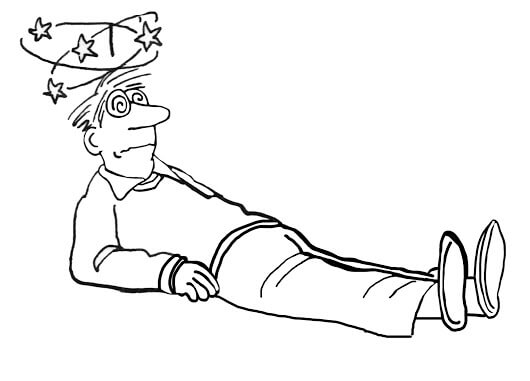HISTORY Mnemonic: 4D-3E-2Fg-2H 1. Define “Dizziness”: Room is spinning/rocking/somersaulting – Vertigo Feel like “going to faint” – Near-syncope “Going to fall” or “Unsteady on feet” – Disequilibrium Feel like they’ve or are “left their body” or “floating/swimming” – Psychophysiologic dizziness 2. Duration of each episode: Seconds: BPPV Minutes: TIA or…
Tag: Nervous system
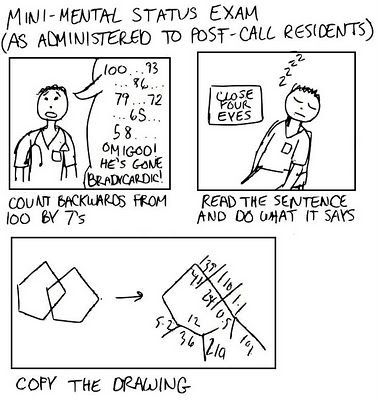
Folstein Mini-Mental State Examination (MMSE): Mnemonic
ORARL, 5-3-5-3-9 1. Orientation: Time (5 points – 1 for each correct): What is the: (year) (season) (date) (day) (month)? Place (5 points – 1 for each correct): Where are we: (state) (county) (town) (hospital) (floor)? 2. Registration: Name three objects, ask patient to repeat (3 points – 1 for each on first…

Guillain Barre Syndrome (GBS) – Mnemonic
ASBURY CRITERIA FOR GUILLAIN BARRE SYNDROME (GBS) Required Criteria Mnemonic: AIDP 1. Areflexia 2. Include in differential and rule out other causes 3. Duration < 4 weeks 4. Progressive weakness of 2 or more limbs due to neuropathy Supportive criteria Mnemonic: AIDPS 1. Afebrile 2. Involvement: Mild sensory involvement Facial…
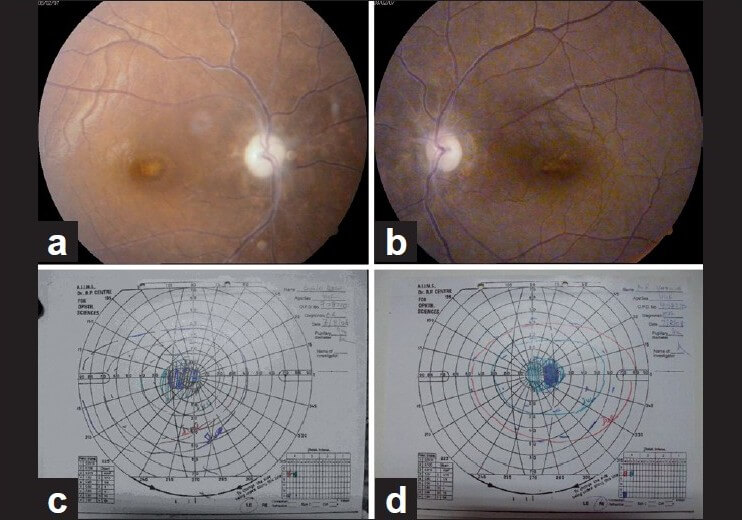
Ethambutol Induced Optic Neuropathy
Mechanism of Ethambutol induced optic neuropathy Ethambutol is metabolized to a chelating agent. The chelating agent formed then may impair the function of metal-containing mitochondiral enzymes, such as the copper containing cytochrome-c oxidase of complex IV and the iron containing NADH:Q oxidoreductase of complex I. These mitochondrial respiratory chain play…
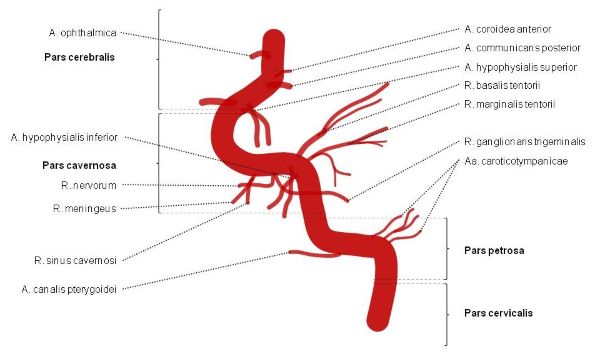
Internal Carotid Artery – Segments and Branches
7 segments of Internal Carotid Artery We have already discussed a mnemonic to remember the course of Internal Carotid Artery with the help of 2 horizontal “S” under the topic of Circle of Willis. C1 – Cervical segment C2 – Petrous (horizontal) segment C3 – Lacerum segment C4 – Cavernous…
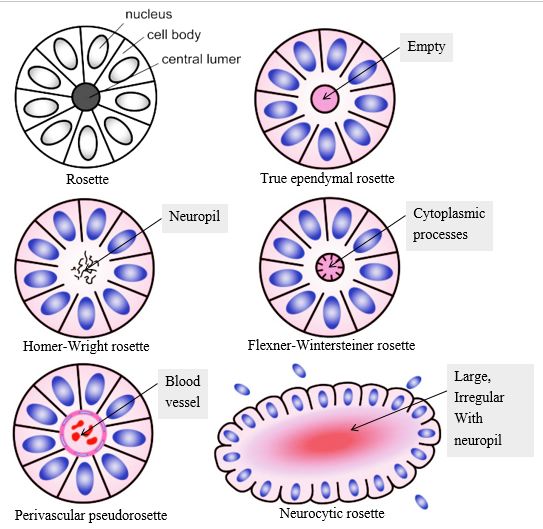
Rosettes in Pathology
Rosette refers to a decoration or pattern resembling a rose. In pathology, rosette refers to aa halo or “spoke-wheel” arrangement of cells around a central structure especially in neoplasms of neuroblastic or neuroectoderma origin. The central structure can be: a. Empty lumen: True ependymal rosette Well differentiated ependymomas (minority of cases)…
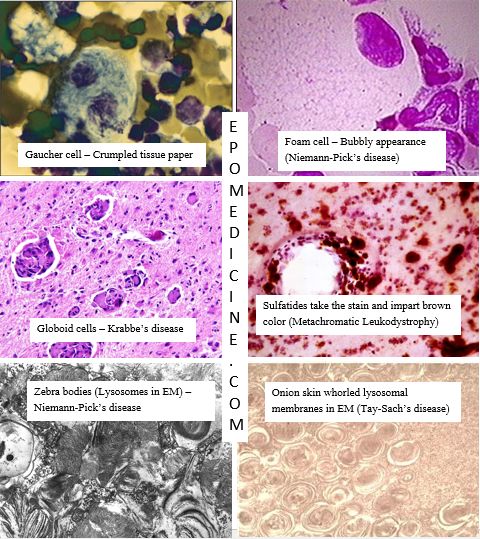
Lysosomal Storage Disorders Made Easy
Among the common lysosomal storage disorders: Two of them are Mucopolysaccharidoses (Hunter and Hurler syndrome) Pompe’s disease is Glycogen Storage Disease. Others are Sphingolipidoses. Inheritance of Lysosomal Storage Diseases All are inherited as Autosomal Recessive (AR) condition except: Hunter syndrome (X-linked recessive) Fabry’s disease (X-linked recessive) Higher risk in Ashkenazi…

Milkmaid’s grip in Chorea
Milkmaid’s Grip Milk maids grip is appreciated as an alternating squeezing and releasing of the finger like a milking motion, when asked to maintain a constant, firm grip of examiner’s fingers. This may reflect a combination of Chorea and Motor impersistence. As a result of poor grip, patients often involuntarily…
